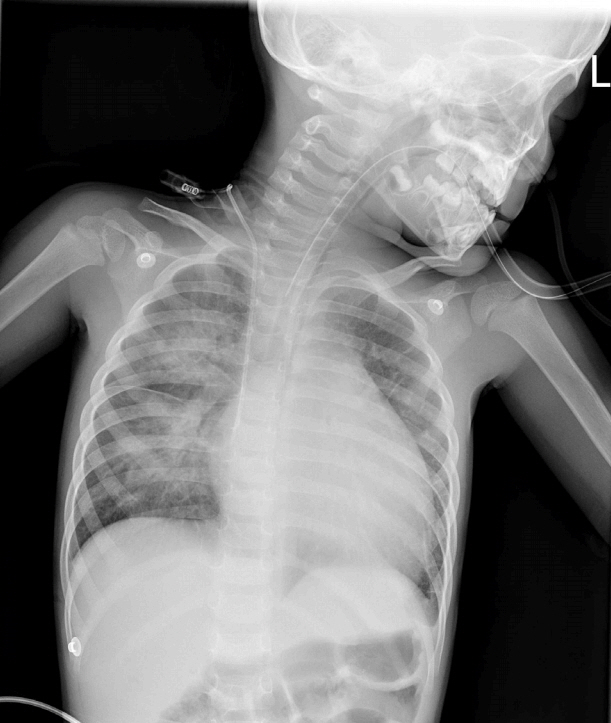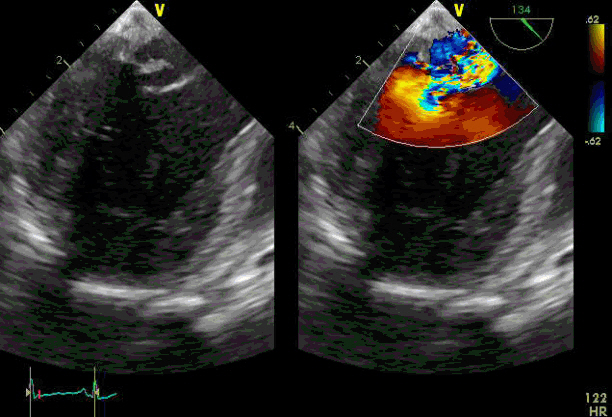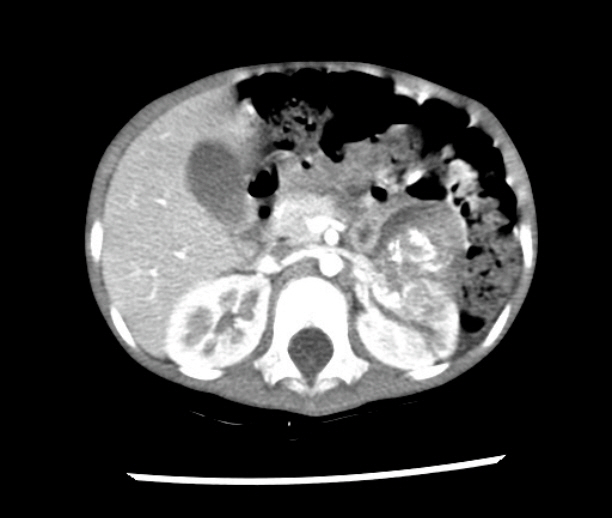Korean J Crit Care Med.
2015 Nov;30(4):299-302. 10.4266/kjccm.2015.30.4.299.
Catecholamine-Induced Cardiomyopathy associated with Neuroblastoma and Treated with Extracorporeal Membrane Oxygenation as a Bridge to Recovery
- Affiliations
-
- 1Department of Anesthesiology and Pain Medicine, School of Medicine, Kyungpook National University, Daegu, Korea. hsuaa@naver.com
- 2Department of Anesthesiology and Pain Medicine, Catholic University of Daegu School of Medicine, Daegu, Korea.
- KMID: 2156184
- DOI: http://doi.org/10.4266/kjccm.2015.30.4.299
Abstract
- Catecholamine-induced cardiomyopathy associated with neuroblastoma is rarely reported. We report a case of catecholamine-induced cardiomyopathy associated with neuroblastoma in a 33-month-old female that was treated with extracorporeal membrane oxygenation (ECMO). She was tentatively diagnosed with acute myocarditis and presented with hypertension. Because of rapid patient deterioration despite pharmacological treatments, ECMO was applied. ECMO can be helpful in cases of catecholamine-induced cardiomyopathy associated with neuroblastoma.
Keyword
MeSH Terms
Figure
Reference
-
References
1. Singh HR, Paules M, Forbes TJ, Zilberman MV. Reversible dilated cardiomyopathy and neuroblastoma. J Pediatr. 2005; 147:271.
Article2. Lee YH, Lee HD, Lee YA, Lee YS, Jung JA, Hwang GG, et al. Ganglioneuroblastoma presenting as dilated cardiomyopathy. Arch Dis Child. 2003; 88:162–4.
Article3. Carlson P, Jefferies JL, Kearney D, Russell H. Refractory dilated cardiomyopathy associated with metastatic neuroblastoma. Pediatric Blood Cancer. 2010; 55:736–8.
Article4. Kato M, Hirata S, Kikuchi A, Ogawa K, Kishimoto H, Hanada R. Neuroblastoma presenting with dilated cardiomyopathy. Pediatr Blood Cancer. 2008; 50:391–2.
Article5. Kwok SY, Cheng FW, Lo AF, Leung WK, Yam MC, Li CK. Variants of cardiomyopathy and hypertension in neuroblastoma. J Pediatr Hematol Oncol. 2014; 36:e158–61.
Article6. Sardesai SH, Mourant AJ, Sivathandon Y, Farrow R, Gibbons Do. Phaeochromocytoma and catecholamine induced cardiomyopathy presenting as heart failure. Br Heart J. 1990; 63:234–7.
Article7. Suh IW, Lee CW, Kim YH, Hong MK, Lee JW, Kim JJ, et al. Catastrophic catecholamine-induced cardiomyopathy mimicking acute myocardial infarction, rescued by extracorporeal membrane oxygenation (ECMO) in Pheochromocytoma. J Korean Med Sci. 2008; 23:350–4.
Article8. Shiraishi I, Nishimura K, Sakaguchi H, Abe T, Kitano M, Kurosaki K, et al. Acute rupture of chordate tendineae of the mitral valve in infants: a nationwide survey in Japan exploring a new syndrome. Circulation. 2014; 130:1053–61.
- Full Text Links
- Actions
-
Cited
- CITED
-
- Close
- Share
- Similar articles
-
- Catastrophic catecholamine-induced cardiomyopathy rescued by extracorporeal membrane oxygenation in recurrent malignant pheochromocytoma
- Stress-Induced Cardiomyopathy Presenting as Shock
- Anesthetic experience using extracorporeal membrane oxygenation for cesarean section in the patient with peripartum cardiomyopathy: a case report
- Stress-induced Cardiomyopathy during Pulmonary Resection (Takotsubo Syndrome): A case report
- Extracorporeal Membrane Oxygenation for 67 Days as a Bridge to Heart Transplantation in a Postcardiotomy Patient with Failing Heart and Mediastinitis




